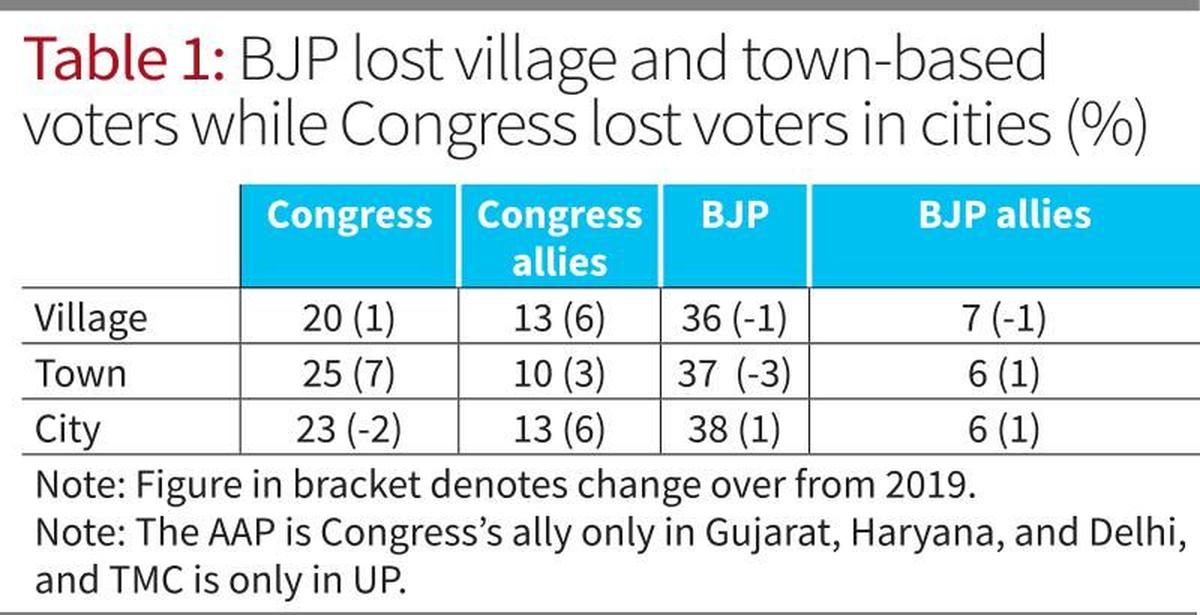
Alappuzha municipal chairperson K.K. Jayamma and others return home on a boat after voting at a polling booth at Punnamada in Alappuzha, Kerala. File | Photo Credit: The Hindu
In the last two general elections (2014 and 2019), the BJP gained dominance more or less uniformly across urban and rural India. This time, it has got a much lower seat share compared to 2019. Did all segments of voters equally contribute towards this or was this the outcome an aggregate of their distinctive behaviours? With the findings of the Lokniti-CSDS post-poll study, we attempt to understand the voting patterns of those living in India’s cities, towns, and villages.
Broadly, people in larger urban centres remained more loyal to the BJP compared to those in small towns. Surprisingly, the BJP remained strong in rural areas too. Among city dwellers, 23% voted for the Congress, while 38% voted for the BJP (Table 1). Compared to the previous election, the Congress lost the support of 2% of those living in cities while the BJP gained marginally. However, the Congress’ loss was adequately made up by its allies, who secured support from 13% of voters belonging to this segment, which is 6% points higher than last time, mostly at the cost of ‘others’. Among the urban poor, 38% opted for the BJP, while 22% voted for the Congress. Among the rural poor, 37% voted for the BJP and 21% for the Congress.

Those living in towns appear to have contributed the most to the improved performance of the Congress. Compared to last time, the Congress secured an additional 7 points in votes in towns, while the BJP lost 3 points in towns. The Congress’ coalition partners secured a higher proportion of support from voters in towns (10%) compared to the coalition partners of the BJP (6%).
Among voters in villages, 20% voted for the Congress and 36% voted for the BJP. Combined with the support secured by its allies, the INDIA bloc got an additional support of 6 points in villages compared to the previous election. This is in contrast to the NDA which lost 1 point in villages compared to 2019.
Compared to the overall vote shares of the Congress and the BJP, the difference in rural and urban voters therefore did not seem to be very critical for the BJP since its vote share across spatial locations is more or less the same. But in the case of the Congress, voters from towns definitely seem to have voted more for it than others.
There could be a number of reasons why the Congress and the BJP performed they way they did in cities, towns, and villages. While smart city projects and global diplomatic events could have attracted a section of city dwellers towards the BJP, soaring unemployment and unsatisfactory civic infrastructure might have hindered the party’s ability to expand its support among a wider section of such voters.
But more significantly, despite agrarian unrest and protests, the BJP managed to retain a robust vote share in rural areas. Needless to say, this all-India picture somewhat understates the BJP’s failures in States such as Punjab and Uttar Pradesh.
Abhinav Pankaj Borbora & Priyanka Mittal are researchers at Lokniti-CSDS

